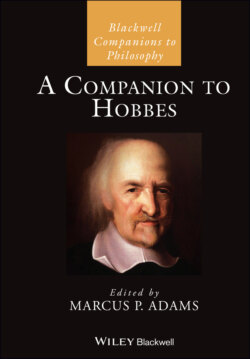Читать книгу A Companion to Hobbes - Группа авторов - Страница 48
3.2 The Dispute with Wallis
ОглавлениеAny discussion of Hobbes’s mathematics takes place against the background of his controversy with Wallis. Indeed, the majority of Hobbes’s mathematical writings aim either at countering Wallis’s objections or mounting a case against Wallis’s own mathematics. The quarrel was ignited in 1655 with the publication of Hobbes’s De corpore, whose third part (entitled “On the Ratios of Motions and Magnitudes”) contains a wide variety of mathematical material, including an attempted circle quadrature in chapter XX. Wallis responded in the same year with Elenchus geometriæ Hobbianæ, and the two traded polemics on and off for decades until Hobbes’s 1679 death put an end to the matter.12
Although the exchange of polemics centered on mathematics, it would be a mistake to think that other factors were absent, as questions of politics and religion (along with fine points of grammar and philology) were raised and debated in the course of the dispute. I propose to recount its origins briefly, and then examine the “method of motion” that Hobbes thought would solve all geometric problems.
